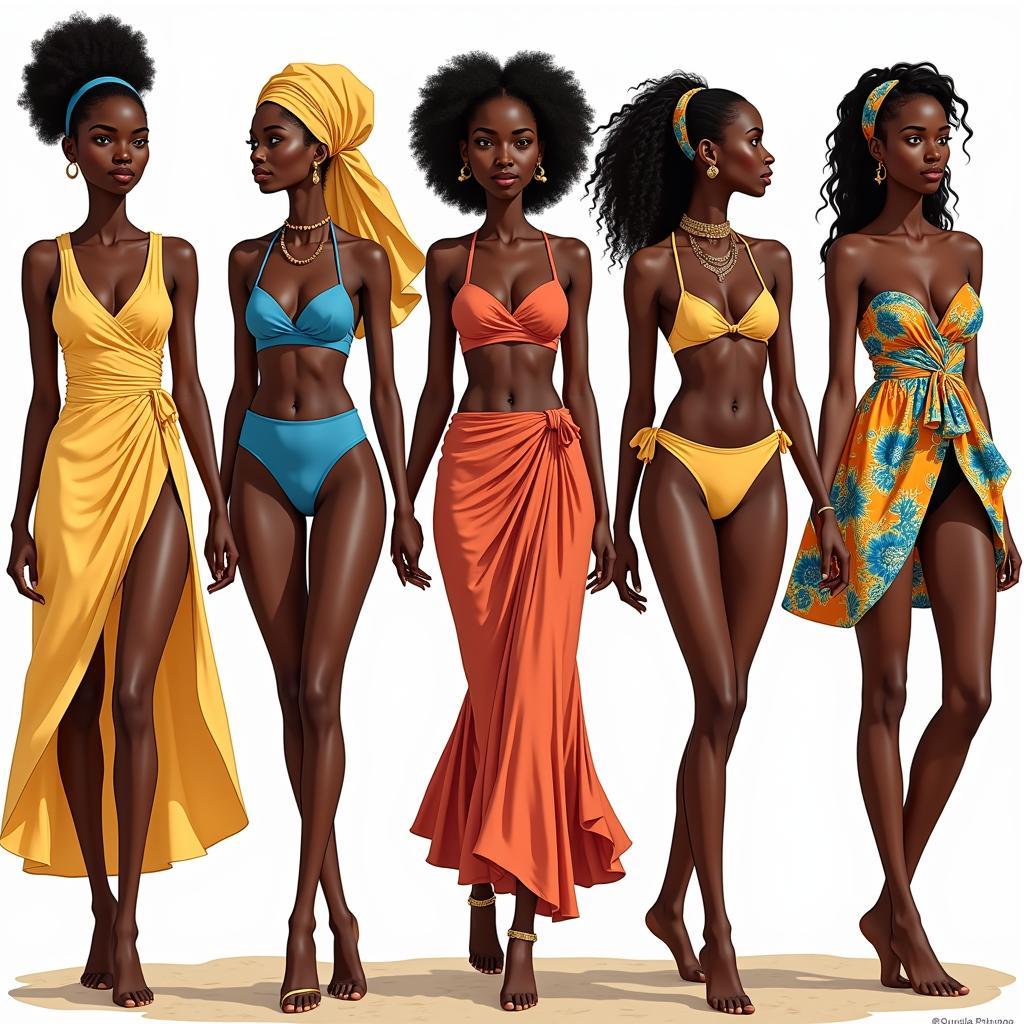Exploring the Vibrant World of South African Traditional Dresses
South African Traditional Dresses are a vibrant tapestry woven with cultural threads, historical narratives, and artistic expression. From the intricate beadwork of the Ndebele to the striking geometric patterns of the Xhosa, these garments tell stories of heritage, identity, and belonging. This exploration delves into the rich symbolism and diverse styles that make South African traditional dresses so captivating.
South Africa boasts a rich diversity of cultures, each with its own unique traditional attire. These dresses are not merely clothing; they are powerful symbols of identity, reflecting the wearer’s ethnicity, social status, and even marital status. From everyday wear to ceremonial garments, South African traditional dresses offer a fascinating glimpse into the country’s cultural landscape. You can discover more about the fascinating history and significance of these beautiful garments at about south african traditional dresses.
The Symbolism Behind South African Traditional Dresses
The intricate details and vibrant colors often found in South African traditional dresses hold deep symbolic meaning. Beadwork, for instance, can communicate complex messages about age, marital status, and social standing. Specific colors and patterns may represent clan affiliations or spiritual beliefs. Understanding these subtle nuances adds another layer of appreciation to the beauty of these garments.
Different tribes use different materials and techniques in creating their traditional attire. For example, the Zulu people are known for their intricate beadwork and the use of animal hides, while the Xhosa people often incorporate striking geometric patterns into their clothing. These variations reflect the unique cultural expressions of each tribe.
A Closer Look at Specific South African Traditional Dresses
Each tribe in South Africa boasts unique and distinctive traditional dresses. Let’s delve into a few examples. The Xhosa people are known for their intricate beadwork and use of red ochre. Their garments often feature elaborate headpieces and beaded skirts. The Zulu people, on the other hand, often incorporate animal hides and feathers into their attire, creating a bold and dramatic effect. The Ndebele people are renowned for their vibrant geometric patterns, which adorn their clothing and homes.
The Ndebele people’s artistry extends beyond just clothing. They also decorate their homes with similar vibrant geometric patterns, creating a truly unique and visually striking cultural landscape. Their beadwork, in particular, is highly sought after and admired for its intricate detail and bold color combinations. Traditional attire also often incorporates african beads.
What are the most common types of South African Traditional Dresses?
Some of the most common and recognized South African traditional dresses include the Xhosa umbhaco, the Zulu isidwaba, and the Ndebele ijogolo. Each dress possesses unique characteristics, reflecting the specific customs and traditions of the respective tribe. The Zulu isidwaba, for example, is a leather skirt traditionally worn by married women.
The Evolution of South African Traditional Dresses
While deeply rooted in tradition, South African traditional dresses are not static. They continue to evolve, reflecting the changing times and influences. Modern interpretations often incorporate contemporary fabrics and designs while still retaining the essence of the original garments. This blend of tradition and modernity ensures that these dresses remain relevant and continue to be cherished by future generations. For modern interpretations of traditional garments check out african inspired suits for men.
Where can you see South African Traditional Dresses?
South African traditional dresses can be seen at various cultural events, festivals, and ceremonies throughout the country. These events offer a wonderful opportunity to witness the beauty and diversity of these garments firsthand. You may also find examples displayed in museums and cultural centers. Traditional dress is also often worn for dance performances, as exemplified by the african dance dress.
Preserving the Legacy of South African Traditional Dresses
Preserving the rich heritage of South African traditional dresses is crucial. Efforts are underway to document and safeguard these cultural treasures for future generations. This includes supporting local artisans, promoting traditional craftsmanship, and educating the public about the significance of these garments. Many traditional practices have been passed down through generations, sometimes incorporating knowledge of african healing herbs list.
In conclusion, South African traditional dresses are more than just clothing; they are vibrant expressions of culture, history, and identity. From the intricate beadwork to the striking patterns, each garment tells a story. By understanding and appreciating the symbolism and significance of these dresses, we gain a deeper understanding of the rich cultural tapestry of South Africa. Explore the vibrant world of South African traditional dresses and discover the stories they tell.
FAQ
- What is the significance of beadwork in South African traditional dresses?
- Beadwork often communicates messages about age, marital status, and social standing.
- What are some of the most common types of South African traditional dresses?
- Some common types include the Xhosa umbhaco, the Zulu isidwaba, and the Ndebele ijogolo.
- Where can I see South African traditional dresses?
- You can see them at cultural events, festivals, ceremonies, museums, and cultural centers.
- How are South African traditional dresses evolving?
- Modern interpretations incorporate contemporary fabrics and designs while retaining traditional elements.
- Why is it important to preserve the legacy of these dresses?
- Preserving them safeguards cultural heritage for future generations.
- What materials are commonly used in making these dresses?
- Materials vary by tribe and can include beads, animal hides, feathers, and various fabrics.
- Are there differences in traditional dress between men and women?
- Yes, significant differences exist, reflecting different roles and social statuses.
More questions and resources:
- How are South African traditional dresses made?
- What are the regional variations in traditional dress within South Africa?
- Where can I learn more about the history of South African traditional dress?
- Are there any books or documentaries about this topic?
For further assistance, please contact us at Phone Number: +255768904061, Email: [email protected], or visit us at Mbarali DC Mawindi, Kangaga, Tanzania. We have a 24/7 customer service team.


